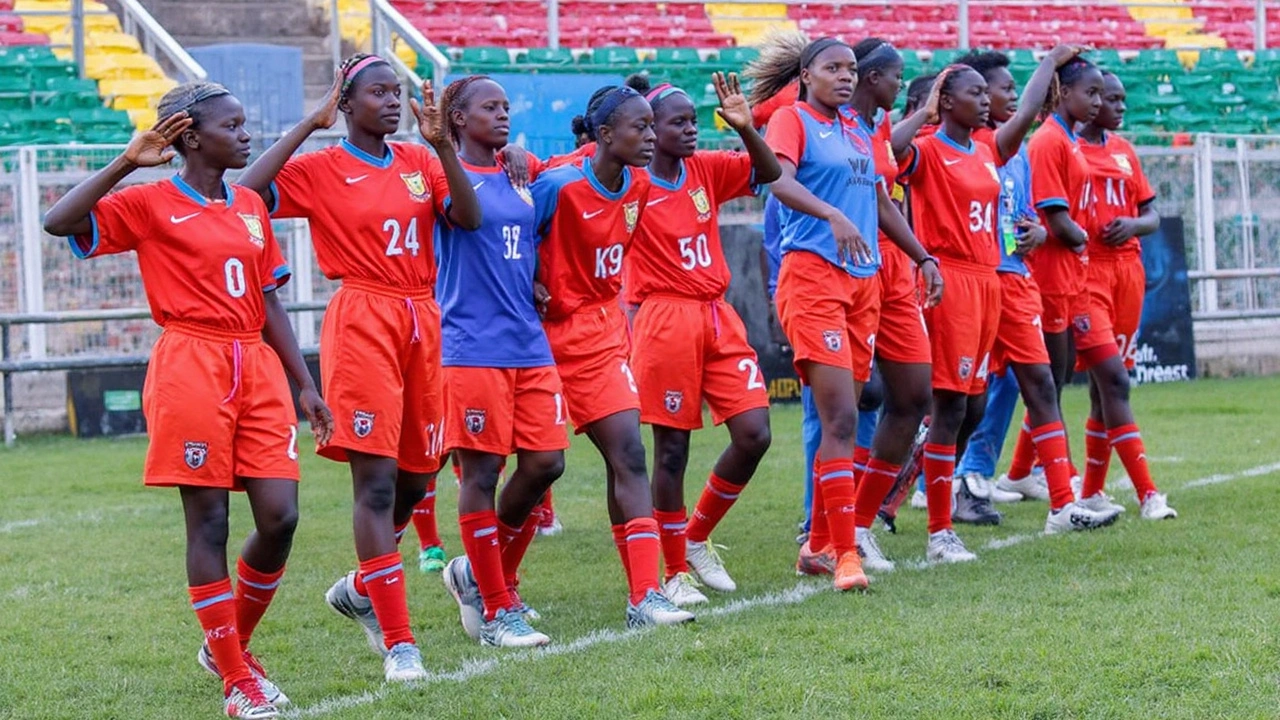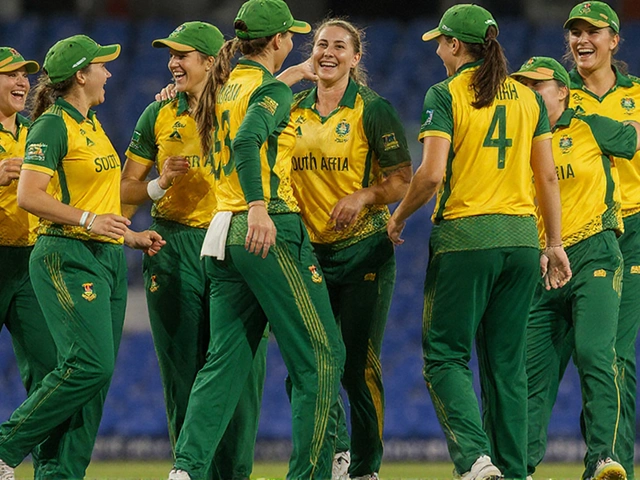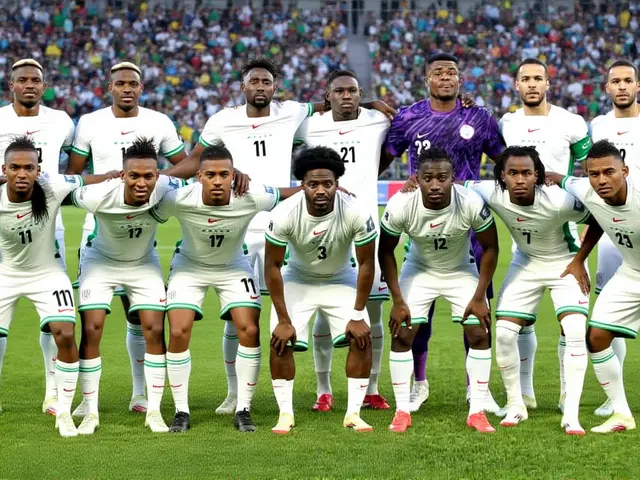Kenya’s U17 Women Eliminated from 2025 World Cup Qualifiers After Cameroon Loss

Kenya’s World Cup Journey Ends on a Tough Note
The dream of a second consecutive appearance at the FIFA U17 Women’s World Cup has slipped away for Kenya’s Junior Starlets. After fighting hard for most of their campaign, the team’s journey ended in heartbreak with a 4-1 aggregate defeat to Cameroon, a result that’s hit both players and fans right where it hurts.
The first leg on April 20 in Nairobi was a tense affair. Kenya started out full of energy, showing flashes of the skill that took them to the global stage last year. But despite weaving together decent passages of play, the Starlets just couldn’t find the net when it mattered. Cameroon snatched their chance—capitalizing on a brief lapse in focus from Kenya’s defense to register the game’s lone goal. The home side tried to fight back, but chance after chance went begging. If you ask their supporters, they’ll tell you this game was lost in front of goal rather than at the back.
Fast forward to April 25 in Yaoundé. This is where Kenya needed a big night. The crowd in the Stade Olembe knew this was do-or-die for the Junior Starlets. As the game picked up pace, Kenya’s urgency was clear. Esther Ochaka sparked hope midway through the second half, confidently putting away a penalty after a handball call. With everything to play for, that moment seemed to jolt the Starlets back into contention.
But football, as ever, can be ruthless. Cameroon's Tazanou broke the deadlock just minutes later, capitalizing on confusion in the Kenyan box. The contest then turned into the Tiwa show. Cameroon's talismanic midfielder rattled in not one but two penalties—one in the late minutes after Kenya gave away a tough foul. By then, you could see disappointment starting to sink in for the Starlets, who simply couldn’t keep pace down the stretch.
Missed Opportunities, Hard Lessons, and What’s Next
Looking back, the tie was lost not just because of Cameroon's sharp finishing but Kenya’s missed opportunities. Early in the return leg, Tiwa thought she had scored, only for the goal to be disallowed for a handball. On Kenya’s end, Nasipwondi went inches wide after a gorgeous solo effort from the edge of the box—a chance that could have put serious pressure on the hosts. Goalkeeper Abwire had her work cut out, pulling off several smart saves to keep the deficit manageable, but cracks kept appearing in the Kenyan back line as the match wore on.
The Starlets’ defeat stings all the more given how bright their start had been. Last year, the squad made headlines for qualifying for their first ever U17 Women’s World Cup. Expectations had soared, and fans hoped this group would go even further. Instead, reality hit—a reminder of the small margins at the international stage. Miss a chance, lose focus for a minute, and you’re out.
- The home crowd in Nairobi witnessed a solid defensive fight but also missed attacking chances.
- Cameroon’s Tiwa proved the difference, not just with goals but driving the midfield from start to finish.
- Kenya’s young squad makes no secret they need to work on conversion and staying alert defensively till the final whistle.
There’s no way around it—the Junior Starlets are out, and it hurts. But the flashes of promise shown by individuals like Ochaka and the near-misses from Nasipwondi have given fans something to look forward to. For the coaching staff, it’s now about tightening up at the back, drilling composure in front of goal, and building a team that can handle pressure away from home. The World Cup door is closed for now, but this young Kenyan side is only just getting started.






Charlotte Louise Brazier
June 7, 2025 AT 18:45The Starlets showed real heart in both legs, but the failure to convert chances cost them dearly. Kenya's defensive shape held up admirably at home, yet a few lapses allowed Cameroon to exploit the space. From a coaching perspective, tightening the transition phase should be a priority. The fans deserve a balanced critique that recognises the promise while demanding higher composure. Let's keep supporting the growth of women's football across Africa.
SAI JENA
June 21, 2025 AT 13:25The aggregate result reflects a tactical disparity that manifested prominently in the second half of the return fixture. Cameroon capitalised on set‑piece efficiency, whereas Kenya faltered in maintaining structural integrity under pressure. A thorough post‑match analysis is essential to address the deficiencies in finishing and defensive organization. Future campaigns will hinge upon the implementation of disciplined training modules.
Donny Evason
July 5, 2025 AT 08:06What we’re seeing here is a classic case of missed opportunities turning into a narrative of disappointment. The Kenyan side entered the Yaoundé clash with vigor, yet the inability to sustain pressure proved fatal. Tiwa’s dual penalties were not just luck; they were the product of relentless pressing that Kenya simply could not match. A more aggressive pressing strategy might have forced errors before the half‑time whistle. Moreover, the mental resilience required to bounce back after conceding is something the youngsters must cultivate. In short, the performance underlines a need for both tactical and psychological upgrades.
Hariom Kumar
July 19, 2025 AT 02:46Totally agree 🙌 Kenya had the spirit but lacked that knockout‑stage composure. Those moments you mention are exactly where experience makes the difference. Keep the faith!
Phillip Cullinane
August 1, 2025 AT 21:27The post‑match briefing underscores a spectrum of performance metrics that, when aggregated, delineate a clear strategic shortfall. First, the conversion ratio in the attacking third hovered at approximately 12%, a figure that sits well below the continental benchmark of 28% for elite U‑17 sides. Second, possession statistics reveal a 48% hold of the ball, indicating an inability to dictate tempo against a defensively compact Cameroon. Third, the high‑pressing phase lacked synchronization; heat‑maps demonstrate sporadic bursts rather than a sustained press, affording opponents ample vertical space. Fourth, set‑piece execution was suboptimal, with only one corner resulting in a near‑goal, highlighting deficiencies in rehearsed routines. Fifth, defensive transitions were marred by delayed line drops, as evidenced by the 3‑second lag in the backline’s collective shift after losing possession. Sixth, goalkeeper Abwire’s expected save percentage (xSV) was calculated at 0.62, yet the actual save rate fell to 0.55, a discrepancy warranting targeted shot‑stopping drills. Seventh, the midfield’s pass completion rate of 71% suggests hurried distribution under pressure, a metric that can be elevated through controlled possession drills. Eighth, the psychological component cannot be ignored; player interviews indicate a dip in collective confidence after conceding the first goal, a factor that can be mitigated through resilience training. Ninth, tactical adaptability was limited; the team persisted with a 4‑3‑3 formation despite clear indications that a 4‑4‑2 diamond would have better exploited width. Tenth, physical conditioning metrics, such as VO2 max, fell marginally below the required threshold for two‑leg fixtures, potentially contributing to late‑game fatigue. Eleventh, analytics from video review point to a lack of off‑the‑ball runs that could have opened channels for penetrating passes. Twelfth, the disciplinary record was clean, yet the absence of tactical fouls indicates a reluctance to engage in strategic physicality. Thirteenth, scouting reports had identified Cameroon’s set‑piece specialists; failure to assign a dedicated marker resulted in two conceded penalties. Fourteenth, the coaching staff’s halftime adjustments were minimal, reflecting perhaps a rigid adherence to the pre‑match game plan. Finally, the cumulative effect of these variables manifested in a 4‑1 aggregate loss, a result that, while disappointing, provides a comprehensive data set for future performance optimization.
Janie Siernos
August 15, 2025 AT 16:07While the analysis is thorough, I feel the tone borders on overly critical and could discourage young athletes. A balanced acknowledgment of their efforts would be more constructive.
joy mukherjee
August 29, 2025 AT 10:48The progression of Kenyan women's football is undeniably impressive, yet the recent exit highlights specific technical gaps that need addressing. Defensive transitions were fragmented, and the attacking third lacked a clear decision‑making hierarchy. Coaching staff should prioritize rehearsing set‑piece variations to exploit marginal advantages. I remain optimistic about the next generation's potential.
Rob Chapman
September 12, 2025 AT 05:28Great points I think the team just needs more reps on those scenarios
Delaney Lynch
September 26, 2025 AT 00:09Isn't it fascinating, how a single penalty can swing the momentum of an entire two‑leg tie, especially when the pressure is palpable, and the players' composure is tested, and the crowd's reaction fuels the drama, making every move count?
Nicholas Mangraviti
October 9, 2025 AT 18:49They'll bounce back next season.
Jared Greenwood
October 23, 2025 AT 16:17The hyper‑focus on isolated incidents obscures the systemic deficiencies that plagued Kenya's tactical framework throughout the campaign.
Sally Sparrow
November 6, 2025 AT 12:44Honestly, this kind of analysis just excuses poor coaching; the staff should be held accountable.
Eric Yee
November 20, 2025 AT 10:11All in all the Starlets gave us a thrilling ride and now it's time to regroup and come back stronger